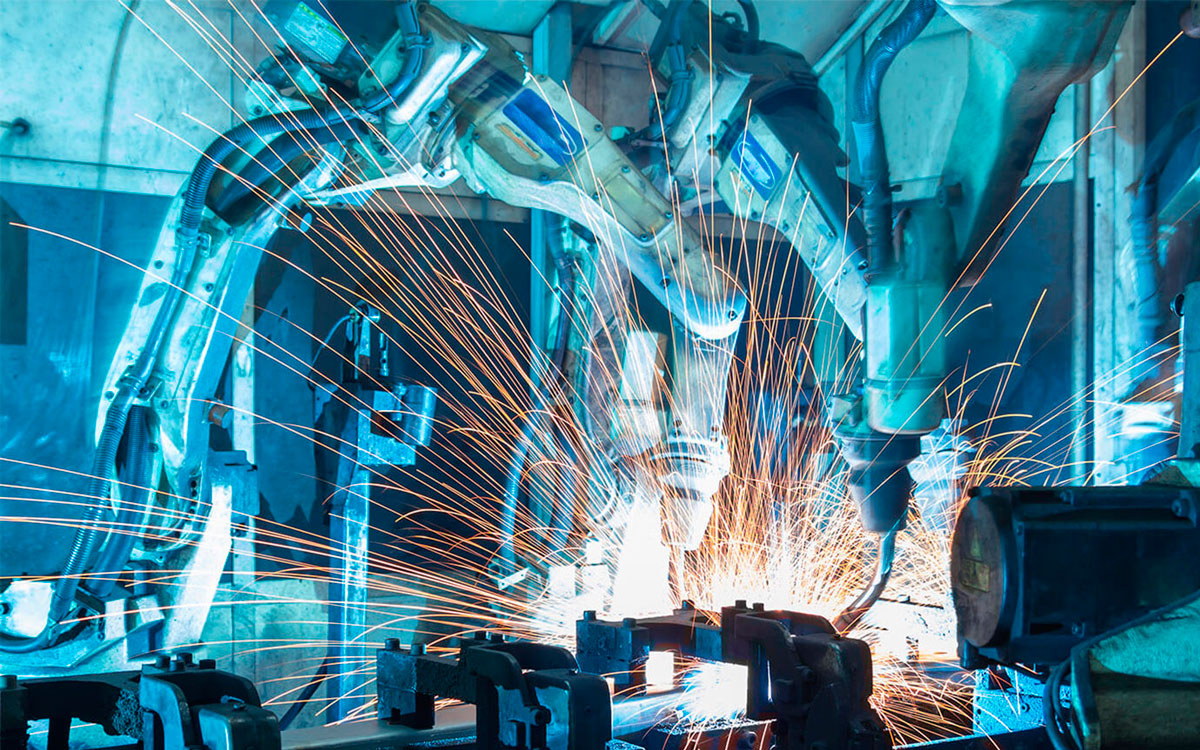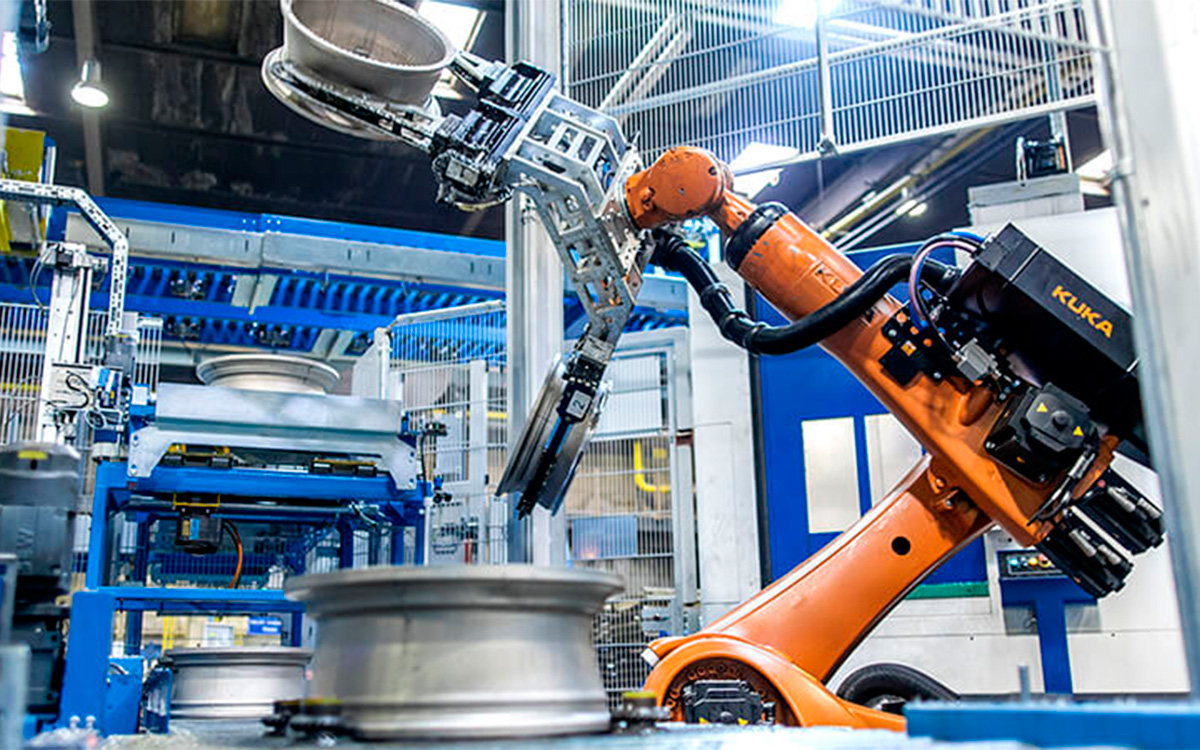The future is now

MAI is engaged in creating Rostec Centre of Robotic Technologies for responding to the production needs of the future. This is a joint project of Russian Helicopters Holding, United Aircraft Corporation (UAC), Concern Radio-Electronic Technologies (KRET), United Engine Corporation (UEC), Technodinamika Holding and Moscow Aviation Institute. Valentina Sizikova, project coordinator and Head of MAI Directorate for Advanced Production Projects, told how and what the new Centre will be working on.
What position does MAI take on global robotic production trend?
Robotics in aerospace is no longer exotic in world practice. Although in Russia, robots are still used in very small numbers even in the automotive industry. This gap significantly affects country’s economy. For comparison: China is buying the most industrial robots, tens of thousands. This number increases constantly every year. Only from 2015 to 2017, the Celestial Empire increased the use of robots by 59%. China is followed by Japan, USA, Germany and others. At the same time, there were only 550 units of such equipment in Russia in 2017, and today this number has not changed much.
What should steer the country towards a robotics development?
The transition to robotics centres provides significant advantages against the backdrop of manufacturing growth. Productivity, compared to manual operations, increases several times or even by an order due to the opportunity of using robotic centres 24/7 and minimizing secondary operations. In this connection, parts production cost reduces by 2-4 times through the reduction of personnel, manual work and possible refinements.
High repeatability (stability) of results of robotic processes positively affects the final processes of manufacturing as well as the product quality. There is a potential for optimizing manufacturing area utilisation at the expense of other requirements for space organisation of robotic centres, its fast adaptability and versatility along with the possibility of developing a wide register of products of small and medium size batches that are similar in manufacturing process, including diversified products.
What challenges will the Centre meet?
The creation of a high-technological product is a large-scale and time-consuming process, and manufacturers have a vital interest in investing in production automation, which promises them long-term economic benefits. However, robotics is a complicated technological project that requires the installation of a complex of equipment from various manufacturers as well as the availability of new unique competencies.
Due to conservatism in aviation industry, the implementation of new technology is occurring in phases. Many manufacturers try to use robots on the existing production lines improving only a few stages. Being pioneers and not having the necessary expertise, they take risks and invest huge amount of money in something that will not live up to expectations and will cause losses. Today, specialists who can be a link between robotics and manufacturer are very necessary. Here comes trouble: there are no enterprises having relevant competencies in aerospace engineering in Russia.
Therefore, MAI together with Russian Helicopters and other Rostec subsidiaries made their mission to create a unified experimental engineering Centre. It will become a single window for manufacturer when developing, testing and implementing robotics in various directions, along with when adapting ready-made technical decisions.
In addition, there are other important advantages of the Centre’s establishment: both the creation of the database for all kinds of technology and the concentration of intellectual and research resources. Competency building will help minimize the lead-time and expenses on testing and implementing technologies in manufacturing.
Among the preconditions for initiating the project, there is a successful global experience of testing and implementing robotics and digital manufacturing elements in production processes using competencies and capabilities of established specialized centres (there are 16 in total worldwide). In Russia, engineering centres developing technologies using robotic systems have a narrow specialization, they are disorganized and focused on imported products.
Sanctions policy, aimed at restraint of technology supplies and procurement of imported equipment and its components designed for producing standardized goods, also has an impact. We must consider that aerospace enterprises in Russian Federation use technologies for manufacturing “dual-use” goods. Meanwhile, the industry of development and production of robotic systems is practically absent in the country, as well as the competence for introducing robotics in the aircraft industry.
Why was it Moscow Aviation Institute to become a platform for the Centre?
MAI has all necessary expertise to create such platform. Being a leader among universities in Russian aerospace industry, MAI has unique results accumulated over many years of intellectual activity. Because of productive communications with business, science and education representatives around the world, research work, prospective young minds involvement and development, the university is valued by partners for its ability to forecast industry requirements, create breakthrough developments and train valuable personnel for necessary specialties.
In what form is it planned to organized scientific and practical activities in the Centre?
Firstly, few robotic systems, which are components of a complete production line, will be created on the base of the specialized Centre in MAI. This will allow testing new technologies, complete a list of requirement for customers’ robotics systems, but also understand how to make a particular unification.
Simultaneously, we will improve knowledge of designers by exemplifying how the design methodology should change owing to new technological opportunities. Additionally, the installations will allow designers and technical solutions suppliers to work together on improvements in the design of the next generation of products.
Secondly, we will actively work on building partnerships with IT-solutions and production technologies suppliers, robots manufacturers, etc. Thanks to this, the Centre will be able to make a high-quality selection and provide customers with the best solutions, and transfer ready-made solutions from world leading developers of technologies for applying digital manufacturing elements and robotic systems.
This also includes the organisation of interaction with engineering centres of world robotic workcells and technologies manufacturers and national laboratories for the studies and creation of robotic systems, and with industry institutes and higher educational institutions.
Thirdly, as mentioned earlier, customer relations will take place in the form of a single window and include several stages. Monitoring the Russian and foreign engineering companies market in search of the best competencies, selection of cross-functional teams with the freshest knowledge (each project has its own team), detailed design development, technology testing, concept development which doesn’t require using physical hardware at first stages. Further, assembly of the workcell at the customer manufacture and support of technology testing to communicate results to the desired level.
Fourthly, we will train specialists, thus, creating a human resource for robotic workcells development (designers, technologists, programmers) and introducing robot workcells based technologies at industrial enterprises (technologists, managers, IT-specialists, programmers).

How will the personnel selection process happen? Will MAI students be involved?
The project team will consist of a core (full-time employers) and external specialists.
The first group will become the face and main driving force of the project. It will accumulate competencies, conduct scientific and experimental work on the installations, develop and train robot workcell specialists, transfer robotics technology from abroad, and many other.
The second group is specialists enlisted for a specific project with the participation of external companies. Typical structure of the Centre: project manager, team of 3-5 people (designers, programmers, technologists), industrial area equipped with robotic workcell. Such format will allow the competence centre to meet a wide range of challenges depending on customer requests. We are not limited to Russia in the personnel issue here – we are open to the whole world where there are necessary competencies.
Understanding that suppliers of personnel with the freshest knowledge are universities in the first place, we do not ignore MAI students. The university is a unique talent foundry where you can find specialists of a wide range of areas of priority industries. MAI students from Institute № 12 “Aerospace Science-Based Technologies and Production”, Institute № 3 “Control Systems, Informatics and Power Engineering”, Institute № 9 “General Engineering Training”, Institute № 11 “Materials Science and Materials Technologies” are already working with us at the stage of construction.
How is the Centre of Robotics Technologies being prepared for its official launch and what are your plans for the future?
We already have five projects from domestic customers with whom we are developing technical requirements and selecting teams. Besides, a massive work for building competencies and analysing existing international experience is being done, communication with partners and specialised centres around the world is forged.
Our main goal is to take a technology leap, lead robotics usage in domestic aerospace industry to a new level. Not only to catch up, but to outrun the countries leading the industry race 4.0